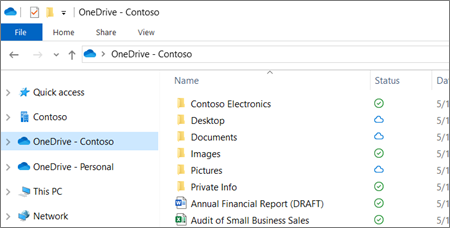
However, you need to dive into the Settings panel briefly to turn the thing on. They are providing you with a dedicated option that you can use to display file extensions at all times.
#Onedrive app vs desktop android#
Microsoft’s developers have been quite considerate with the Android version of OneDrive. If not, you need to use the file’s Properties panel to find out. But that’s a tedious method if you have to check several files.Īnother way to determine a file extension is to simply hover over the file - you should most likely see the extension listed within the tooltip that follows. The file extension should be clearly visible next to Type of File under the General tab. To do that, just right-click the file, and then select Properties on the context menu. Tip:Īlternatively, you can also opt to look up the extension to a file only when you really need to.

They also show up no matter what View mode you use - List, Details, Large Icons, etc. Head over to the OneDrive folder, and you should be able to see all file extensions. Afterward, click Apply, and then click OK to save the changes. Within the Advanced Settings section, uncheck the box next to Hide Extensions for Known File Types. Step 2: On the Folder Options dialog box, switch to the View tab. On the drop-down menu, click Change Folder and Search Options. Step 1: Open File Explorer, and then click File on the menu bar.

However, this causes all files within other directories - not just OneDrive - to show file extensions as well, so it’s something that you should keep in mind. But since it’s fully integrated with Windows, you can use File Explorer’s native functionality to display extensions instead. OneDrive offers no built-in means to enable file extensions on the desktop.


 0 kommentar(er)
0 kommentar(er)
